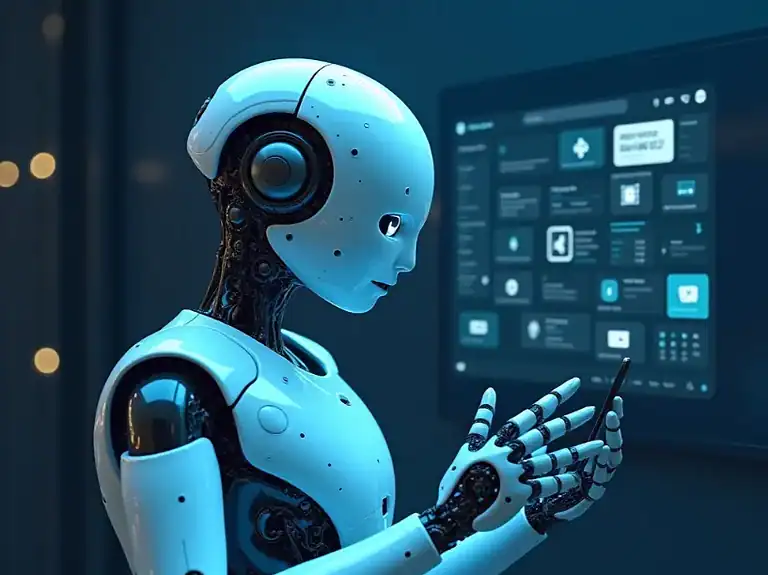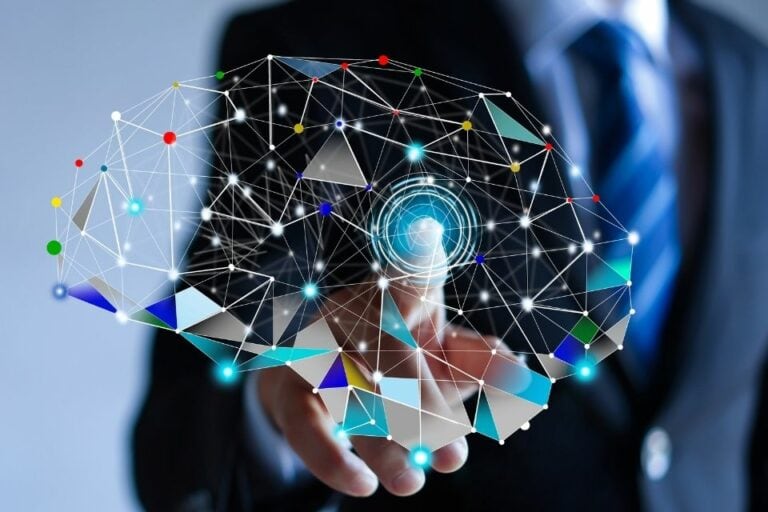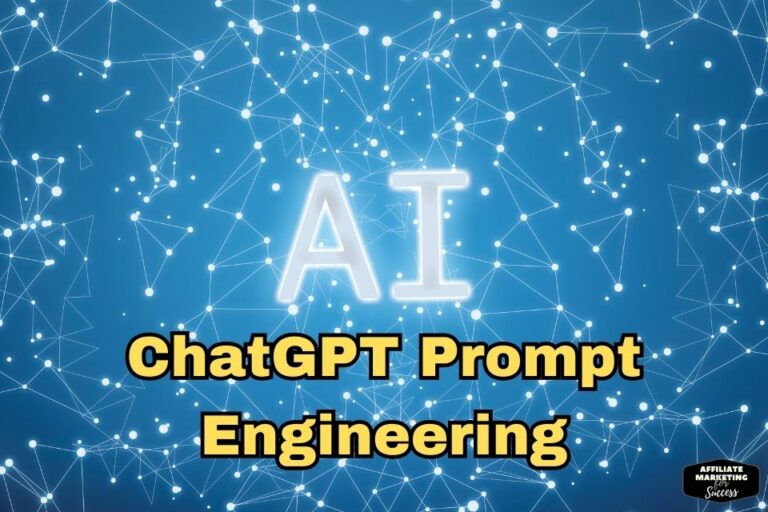ChatGPT in Education: 5 Key Changes in 2025 [Data]
ChatGPT isn’t just a buzzword in education anymore—it’s a game-changer. From primary schools to universities, this AI-powered tool is reshaping how students learn and how teachers teach. It’s not replacing educators; it’s empowering them. In 2025, ChatGPT is no longer a novelty—it’s a necessity.
Let’s dive into how ChatGPT is transforming education, its real-world applications, and the challenges we still need to tackle.
Key Takeaways:
-
Empowerment: ChatGPT enhances teaching and learning without replacing educators.
-
Personalized Learning: Provides tailored tutoring and study aids for students.
-
Efficiency: Automates lesson planning and grading, saving teachers time.
-
Accessibility: Offers low-cost tutoring options for diverse learners.
-
Real-World Impact: Successfully implemented in Estonia and Georgia Tech.
-
Future Potential: Custom AI tutors and global access to education resources.
What is ChatGPT doing in education?

ChatGPT, powered by OpenAI’s GPT-4o, is a conversational AI that understands and generates human-like text. But in education, it’s more than just a chatbot—it’s a versatile assistant for students, teachers, and administrators.
Here’s how it’s making an impact:
-
For Teachers: Automates lesson planning, grading, and content creation, saving hours of prep time.
-
For Students: Acts as a 24/7 tutor, breaking down complex topics and providing personalized feedback.
-
For administrators: Streamlines communication and data analysis for better decision-making.
Top Use Cases of ChatGPT in Education
1.

ChatGPT acts as a personal tutor available 24/7, providing students with tailored support based on their unique learning needs. Whether it’s solving algebra problems or explaining historical events, ChatGPT adapts to the student’s pace and style.
-
: A high school student struggling with quadratic equations can use ChatGPT to receive step-by-step explanations and practice problems.
-
: Students gain confidence and clarity without the fear of judgment.
Explore more about how ChatGPT works to understand its capabilities in personalized learning.
2.
Educators save hours by using ChatGPT to create structured lesson plans, quizzes, and assignments. With just a few inputs, ChatGPT generates cohesive plans that align with curriculum standards.
-
: “Create a 12-week lesson plan for high school environmental science, including weekly objectives and two hands-on activities per week.”
-
: Teachers can focus on engaging with students rather than spending time on administrative tasks.
Learn more about long-term content strategies that integrate AI tools like ChatGPT into educational workflows.
3.
Grading is one of the most time-consuming tasks for teachers. ChatGPT streamlines this process by evaluating assignments and providing constructive feedback based on predefined criteria.
-
: A teacher uploads student essays, and ChatGPT highlights grammar errors, suggests improvements, and assigns grades based on a rubric.
-
: Consistent grading saves time while ensuring fairness.
Discover how AI tools for grading are transforming classroom efficiency.
4.

ChatGPT excels at language tutoring by simulating real-life conversations, correcting grammar, and expanding vocabulary. It also fosters cultural exchange by providing context for idioms or cultural nuances.
-
: A Spanish language learner practices conversational skills with ChatGPT while receiving instant corrections and cultural insights.
-
: Students improve fluency through engaging, interactive sessions.
Check out awesome ChatGPT prompts designed for language learning.
5.
By incorporating game-like elements into lessons, ChatGPT makes education more engaging. Features like quizzes, virtual labs, and coding challenges encourage active participation.
-
: A computer science class uses ChatGPT to turn debugging exercises into a competitive game where students earn points for solving errors.
-
: Gamified learning improves retention and critical thinking skills.
Learn how gamification strategies enhance student engagement in digital classrooms.
6.

ChatGPT facilitates group discussions by suggesting topics, moderating debates, and summarizing key points. It also enables real-time collaboration on shared projects.
-
: Students working on a history project use ChatGPT to gather resources, draft outlines, and refine their presentation collaboratively.
-
: Encourages teamwork while reducing the workload on individual members.
Explore collaborative learning tools powered by AI to promote group interaction.
7.
ChatGPT simplifies complex topics by summarizing textbooks or lecture notes into concise study guides. This feature is invaluable during exam preparation.
-
: A college student asks ChatGPT to summarize a 50-page research paper into key takeaways for an upcoming test.
-
: Saves time while enhancing comprehension.
Discover how content summarization tools are reshaping academic success strategies.
8.

ChatGPT provides tailored assistance for students with learning disabilities or special needs by offering customized materials in accessible formats.
-
: A dyslexic student uses ChatGPT to convert text into larger fonts or audio files for easier comprehension.
-
: Promotes inclusivity by catering to diverse learning requirements.
Learn more about AI accessibility features that support special education initiatives.
9.
Teachers can rely on ChatGPT to outline entire curriculums, including weekly topics, objectives, and recommended resources like books or documentaries.
-
: “Design a 10-week curriculum for middle school biology with hands-on experiments.”
-
: Ensures comprehensive coverage of educational standards without overwhelming educators.
Check out curriculum design tips to streamline your teaching approach using AI tools.
10.
ChatGPT acts as an assistant during live classroom sessions by answering student questions or clarifying doubts instantly without disrupting the flow of teaching.
-
: During a physics lecture, a teacher uses ChatGPT to explain complex formulas while continuing the main lesson.
-
: Enhances classroom interactivity while maintaining focus on core topics.
Explore how real-time AI support is redefining traditional teaching methods.
Real-World Success Stories
Estonia’s National AI Integration
In 2025, Estonia became the first country to integrate ChatGPT Edu into its entire secondary school system under the AI Leap initiative.
By providing free access to AI tools like ChatGPT Edu, Estonia has empowered students with personalized learning experiences while reducing teacher workloads through automated administrative tasks (source).
Georgia Tech’s AI Teaching Assistant
Georgia Institute of Technology deployed “Jill Watson,” an AI-powered assistant based on GPT technology, to handle student queries in large online courses.
This reduced response times dramatically while allowing human TAs to focus on complex issues (source).
Benefits of Using ChatGPT in Education
1. Efficiency for Educators
Teachers save hours on repetitive tasks like grading or creating quizzes, allowing them to focus on teaching strategies and student engagement. Learn more about how AI reduces teacher workloads.
2. Accessibility for All Learners
ChatGPT bridges gaps for students who lack access to traditional tutoring by offering free or low-cost assistance anytime they need it.
This levels the playing field across diverse socioeconomic backgrounds (source).
3. Enhanced Student Engagement
Interactive dialogues and gamified lessons make learning more engaging compared to static textbooks or lectures (source).
Challenges and Limitations
Despite its many advantages, ChatGPT isn’t perfect.
-
Accuracy Issues: It occasionally provides incorrect or overly simplified answers, requiring human oversight (source).
-
Ethical Concerns: Students may misuse it for plagiarism or rely too heavily on AI-generated content instead of developing their skills independently (source).
-
Lack of emotional intelligence: While helpful for academic tasks, ChatGPT cannot replace the emotional support and mentorship provided by human teachers (source).
The Future of Education with ChatGPT
As AI continues to evolve, its role in education will expand even further.
-
Custom AI Tutors: Imagine every student having a personalized AI tutor that adapts lessons based on their progress (source).
-
AI-Powered Classrooms: Teachers could use AI to monitor student performance in real-time and adjust lessons dynamically (source).
-
Global Access to Quality Education: Tools like ChatGPT Edu can democratize education by making high-quality resources accessible worldwide (source).
For those curious about how AI compares across platforms, check out our analysis on Bard vs GPT-4 for insights into which tools are leading the charge.
Practical Tips for Using ChatGPT in Education
-
Use it as a supplement—not a replacement—for traditional teaching methods.
-
Always fact-check its responses before relying on them for critical tasks.
-
Explore advanced prompt engineering techniques to maximize its potential.
-
Encourage ethical usage by emphasizing learning over shortcuts.
Conclusion
ChatGPT is revolutionizing education in ways we couldn’t have imagined just a few years ago—from personalized tutoring to automating tedious tasks for teachers. But like any tool, its value depends on how we use it.
As we look ahead, the integration of AI like ChatGPT into classrooms will require thoughtful policies, comprehensive training for educators, and an emphasis on balancing technology with human connection.
Want to learn more about how AI is shaping the future?
Check out our guide on how generative AI transforms education or explore the best alternatives to ChatGPT!
References:
- https://ppl-ai-file-upload.s3.amazonaws.com/web/direct-files/1044541/ae783c16-3635-491f-8ed2-5201bc5f1aa7/paste.txt
- https://research.aimultiple.com/chatgpt-education/
- https://www.masterycoding.com/blog/landscape-of-ai-in-education
- https://openai.com/index/introducing-chatgpt-edu/
- https://openai.com/index/estonia-schools-and-chatgpt/
- https://raccoongang.com/blog/chatgpt-in-the-educational-landscape-a-comprehensive-guide/
- https://618media.com/en/blog/chatgpt-4-case-studies-success-stories/
- https://artsmart.ai/blog/ai-in-education-statistics-2025/
- https://school-education.ec.europa.eu/en/learn/courses/chatgpt-how-handle-ai-schools
- https://www.digitallearninginstitute.com/blog/the-impact-of-chat-gpt-on-education
- https://generativeaieducationsummit.com.au/content/article-education-meets-ai-success-stories-insights
- https://digitaldefynd.com/IQ/ai-in-schools-case-studies/
- https://www.nature.com/articles/d41586-025-00621-2
- https://openai.com/chatgpt/education/
- https://leonfurze.com/2025/01/20/reintroduction-to-genai-for-schools-2025/
- https://www.timeshighereducation.com/campus/chatgpt-and-generative-ai-25-applications-teaching-and-assessment
- https://www.forbes.com/sites/bernardmarr/2024/12/03/7-critical-education-trends-that-will-define-learning-in-2025/
- https://intelliarts.com/blog/chatgpt-statistics/
- https://summer-schools.aegean.gr/AIMed2025/book
- https://www.learnwise.ai/news-insights/geeking-out-over-edtech-3-1-2025
- https://elfsight.com/blog/chatgpt-usage-statistics/
- https://www.linkedin.com/pulse/my-big-question-ai-education-2025-rebecca-winthrop-srt8e
- https://explodingtopics.com/blog/education-trends
- https://mdpiblog.wordpress.sciforum.net/2025/01/24/international-of-education-2025/
- https://futureskillsacademy.com/blog/new-features-in-chatgpt/
- https://impactteachers.com/blog/top-advances-learning-technology-2025/
- https://dev.to/masterplanner25/2025-chatgpt-case-study-can-you-answer-these-questions-1dg0
- https://www.edupij.com/index/arsiv/64/335/artificial-intelligence-ai-in-education-a-case-study-on-chatgpts-influence-on-student-learning-behaviors
- https://www.coursera.org/articles/jules-white-vanderbilt-genai-and-learning
- https://www.linkedin.com/pulse/graphite-expert-insights-shaping-future-0dt1f
- https://www.weforum.org/stories/2025/01/how-ai-and-human-teachers-can-collaborate-to-transform-education/
- https://www.forbes.com/sites/danfitzpatrick/2025/02/26/chatgpt-to-be-given-to-all-estonian-high-school-students
I’m Alexios Papaioannou, an experienced affiliate marketer and content creator. With a decade of expertise, I excel in crafting engaging blog posts to boost your brand. My love for running fuels my creativity. Let’s create exceptional content together!







